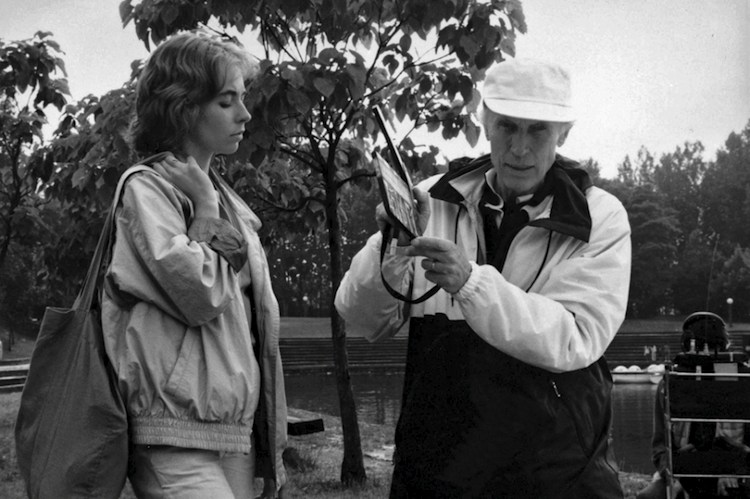By Joe Bendel. His professional pseudonym was derived from Sax Rohmer, but Éric Rohmer is not known for genre pictures. Aside from the occasional well regarded period piece, he remains most celebrated for work within the comedy of manners rubric and his intimately observed relationship dramas. This hardly seems the stuff to inspire obsessive analysis in the tradition of Room 237, but Richard Misek proves the Rohmer canon rewards such close critical scrutiny in his docu-essay Rohmer in Paris, which has its American premiere this Saturday as part of the Museum of the Moving Image’s annual First Look.
The epicenter of Misek’s film is the Tim Hotel in Paris. It was there the potentially adulterous lovers in Rohmer’s Rendezvous in Paris were to have their assignation, only to spy their respective spouses arriving together on a similar mission. As fate would dictate, Misek was also at the Tim Hotel that day and inadvertently found his way into a few frames of Rohmer’s film. Realizing his presence in Rendezvous years after the fact, Misek began binge viewing Rohmer’s filmography.
Obvious commonalities are immediately apparent. Rohmer’s characters are largely Parisians, either in Paris proper or on holiday in the countryside. Chance meetings are commonplace and everybody walks incessantly. As a result, Rohmer’s films document the development of modern Paris, particularly his beloved Left Bank. Considered collectively, his work becomes something of a Möbius strip of characters in motion, crossing over but not interacting with their counterparts from other films.

Cleverly edited by Misek, RIP largely (but not quite entirely) consists of clips from Rohmer films that vividly illustrate his points. While Misek’s commentary is clearly informed by Post-Structuralist critical theory, he never loses sight of the exquisite human dimension to Rohmer’s film. Indeed, he is absolutely brimming over with compassion for the enigmatic subject of Rohmer’s short documentary Nadja in Paris.
RIP probably sounds like indulgent film geekery and perhaps it is, but it is also unfailingly pleasant, conscientiously respectful of Rohmer (and the legacy of classic film in general), and weirdly touching. Misek even wraps things up in a Rohmer-esque ending, which is quite a trick for a documentary.
There is no getting around RIP’s scholarly roots, but it is still easily accessible to anyone interested in Eric Rohmer. It might not hold mass market appeal, but it is a very good film. Most importantly, Misek leaves viewers wanting to re/watch Rohmer’s remarkably accomplished oeuvre, which is always the acid test for a film like this. It also happens to be relatively concise (under seventy minutes), so MoMI will screen it with The Bakery Girl of Monceau, one of Rohmer’s shorts discussed in detail during RIP. Recommended rather enthusiastically to Rohmer fans and postmodernist film students, Rohmer in Paris screens this Saturday (1/11) as part of MoMI’s First Look in Astoria, Queens.
LFM GRADE: A-
Posted on January 7th, 2014 at 8:15pm.
